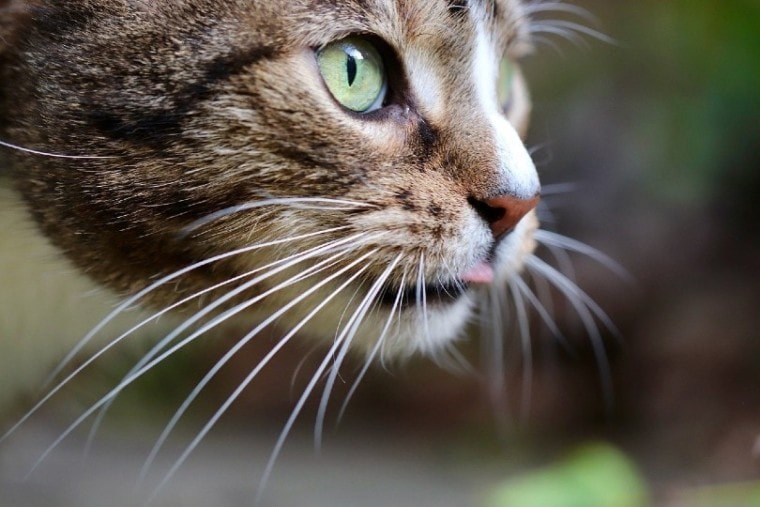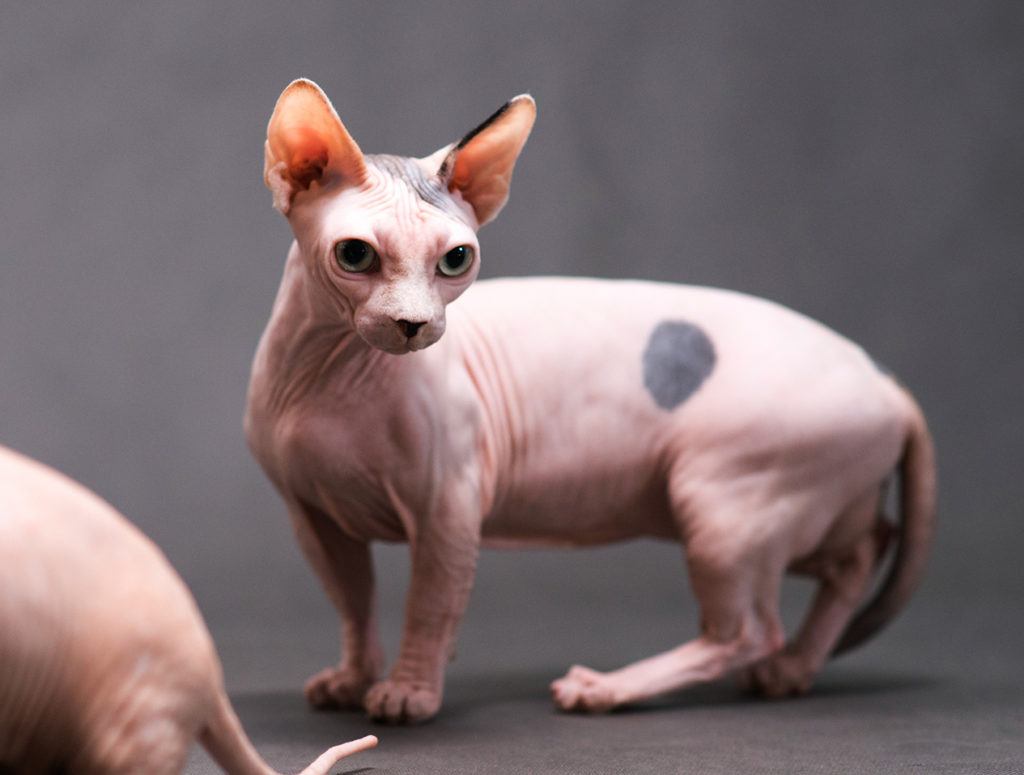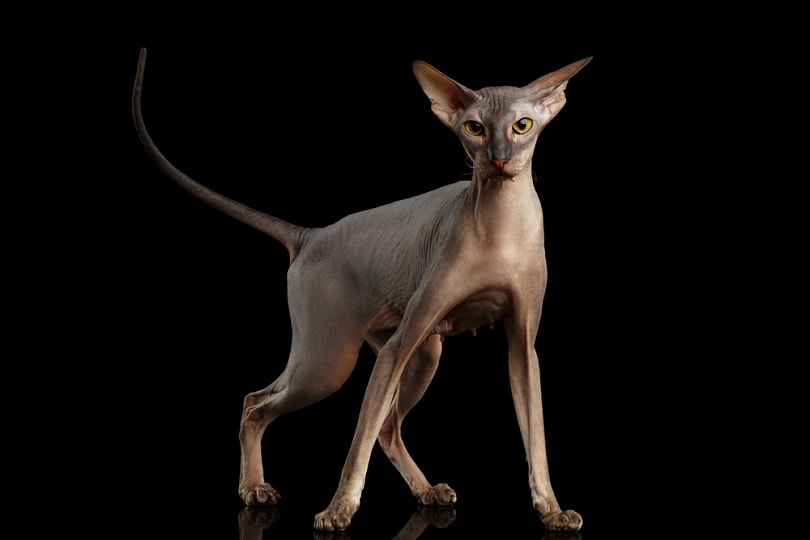
One of the most noticeable things about a cat’s face is its long whiskers. Cat whiskers are an important part of a cat’s anatomy because they help your cat with proprioception, or a cat’s knowledge of where their body parts are in a space. Believe it or not, there are some cat breeds that have very little to no whiskers. Let’s check them out below.
What Cat Breeds Don’t Have Whiskers?
There are a handful of cat breeds that naturally have no or very few whiskers. Thankfully, their lack of whiskers doesn’t seem to have a major negative impact on these cats. They typically have relatively normal physical abilities, including proprioception and balance, as well as an ability to properly navigate their environment through other sensory organs, including sight, scent, and feel.
1. Sphynx

Probably the most recognizable hairless cat, the Sphynx grows little to no hair. Some Sphynx cats may grow little patches of hair during the winter, including small whiskers, but this breed usually lacks full whiskers. Even when they do develop whiskers, they are small and don’t perform as well as normal whiskers due to their size and the fact that they are often kinked.
2. Bambino

The Bambino is a mixture of the Sphynx and Munchkin cat breeds, resulting in a cat that looks very much like a Sphynx with tiny Munchkin legs. These loving cats usually grow a coat in the same fashion as the Sphynx, often in very small patches and only during the winter. They may or may not develop whiskers when they put on their “winter coat”.
3. Peterbald

The Peterbald is a mixture of the Sphynx and Oriental Shorthair breeds. They can have a range of coats, from being completely hairless to having a soft, velvety coating across the body. Some Peterbald cats may have small whiskers all the time, others may only develop them when they grow a thicker coat during the winter, and some may never grow any whiskers.
4. Elf

The Elf is a newer cat breed that is believed to be a mixture of the Sphynx and American Curl. Like other Sphynx mixes, the Elf can have a coat type that varies between fully hairless to a velvety coating. These playful kitties seem to get along well without having full whiskers. Some of them have whiskers, but not all of them do.
5. Dwelf

The Dwelf is another newer cat breed that is a combination of the Elf and Munchkin, making it similar to a Bambino. Like the Bambino, the Dwelf has a very sparse coat, and that’s only when they actually grows any hair at all. Many Dwelf cats don’t grow any hair or whiskers.
Whiskers and Hairless Cats
“Hairless” cats such as the ones mentioned above do have hair, including whiskers, guard hairs and thinner hair. The genetic mutation in breeds mentioned in this article results in their hair lacking a well formed bulb, which is why they dislodge easily. However, these cats still have the master gene for whisker development (also known as Prdm1). This means they have highly innervated follicles in areas where their whiskers would be (including carpal whiskers on their forepaws).
The mutations that make a “hairless” cat appear as such occur on different genes depending on the breed. For example, in the case of the Sphynx, these mutations occur on the KRT71 gene. However, the degree of expression varies from cat to cat, which is why some cats appear more hairless than others. Conversely, this also means that some of them may display more whiskers than others.
Conclusion
Some cat breeds may not have whiskers, proving that whiskers aren’t essential to helping a cat function properly. Whiskers provide a better sense of the environment for cats and are used for proprioception.
Though cats without whiskers are able to manage themselves and navigate themselves, attempting to breed a cat for a lack of whiskers shouldn’t be encouraged, as the lack of whiskers doesn’t offer the cat any advantages and isn’t considered normal.
- Related Read: Do All Cats Have Whiskers? Anatomy Explained
Featured Image Credit: Annette Meyer, Pixabay







